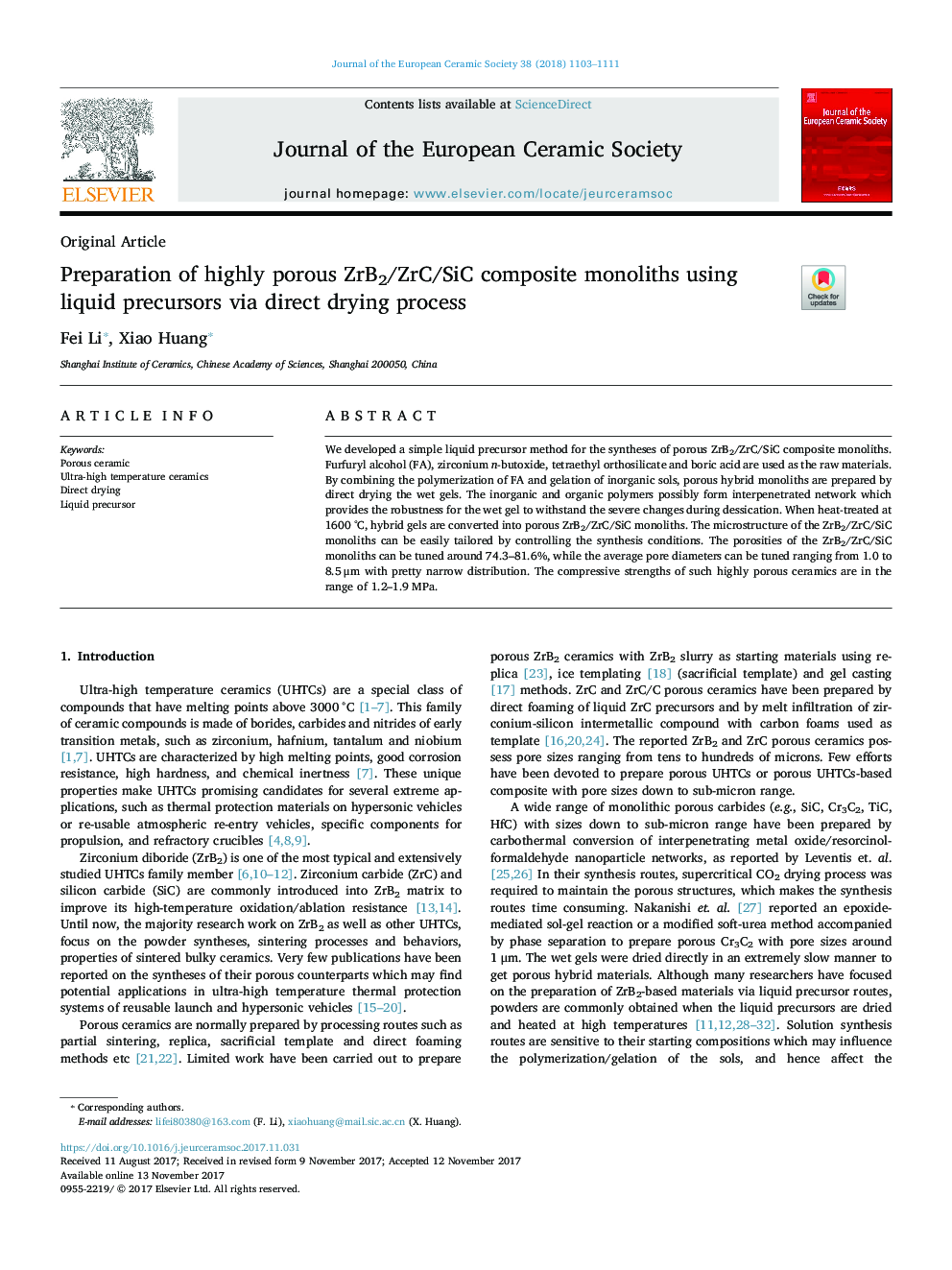| Article ID | Journal | Published Year | Pages | File Type |
|---|---|---|---|---|
| 7898479 | Journal of the European Ceramic Society | 2018 | 9 Pages |
Abstract
We developed a simple liquid precursor method for the syntheses of porous ZrB2/ZrC/SiC composite monoliths. Furfuryl alcohol (FA), zirconium n-butoxide, tetraethyl orthosilicate and boric acid are used as the raw materials. By combining the polymerization of FA and gelation of inorganic sols, porous hybrid monoliths are prepared by direct drying the wet gels. The inorganic and organic polymers possibly form interpenetrated network which provides the robustness for the wet gel to withstand the severe changes during dessication. When heat-treated at 1600 °C, hybrid gels are converted into porous ZrB2/ZrC/SiC monoliths. The microstructure of the ZrB2/ZrC/SiC monoliths can be easily tailored by controlling the synthesis conditions. The porosities of the ZrB2/ZrC/SiC monoliths can be tuned around 74.3-81.6%, while the average pore diameters can be tuned ranging from 1.0 to 8.5 μm with pretty narrow distribution. The compressive strengths of such highly porous ceramics are in the range of 1.2-1.9 MPa.
Related Topics
Physical Sciences and Engineering
Materials Science
Ceramics and Composites
Authors
Fei Li, Xiao Huang,
